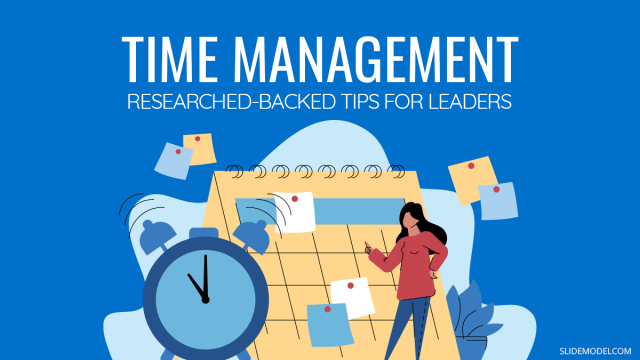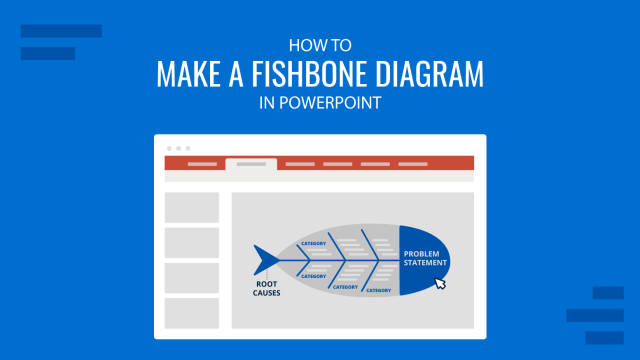
The pressure of delivering a presentation and making an impact on your audience can be overwhelming. One of the escapes that many presenters seek to overcome this stress is procrastination. As counterproductive as it might be, it appears that procrastination is the natural coping mechanism for many presenters looking to escape the idea of failure. If you’re the type who suffers from procrastination and all the ills that come with it; we have just the method you need to overcome your procrastination woes. In what is to follow, we will provide you with a few simple tips regarding how to overcome procrastination and deliver amazing presentations.
Why do Presenters Procrastinate?
In order to understand procrastination and to overcome it, let’s first start with the root cause. The reason many presenters resort to procrastination is often to avoid anxiety. However, procrastination inevitably leads to more anxiety, since one can end up with a lot of pending work amidst a tight deadline. Another reason for procrastination is that one can find it hard to accumulate ideas or to determine where to start or end a presentation. In other words, forming an outline can be confusing due to the overwhelming amount of information that is to be covered. Other factors which lead to procrastination include; stage fright, the risk of failure, depression, fatigue, etc.

How to Overcome Procrastination and Create Amazing Presentations?
You can overcome the bad habit of delaying your presentation tasks by following a simple mechanism which can organize your presentation tasks in such a way that you can prevent yourself from being overwhelmed, get rid of fatigue and be on top of your game to avoid failure. This includes following a structure for making a presentation, using the Pomodoro Technique to enhance productivity and making Parkinson’s Law work in your favor.
Create a Clear Presentation Outline
It can be quite confusing to create a presentation without a clear outline. If you have the habit of making slides for different parts of your presentation without a set sequence, you would notice that contextualizing content can become a challenge. Before you start working on your presentation it is best to create a clear outline, to define the structure of your presentation. Even if you modify this outline later, you would at least have a good idea about what you need.
Start Building Your Slides from the Beginning in a Sequence
You can create your outline and your slides in a sequence which makes the most sense. For example, if you are creating a pitch deck for potential investors, you can start with slides that introduce your company, your team and key achievements of your organization; before moving on to your proposal. Similarly, if you’re creating a presentation with an annual roundup of your company’s performance, it might be logical to start with the first quarter. While there are no hard and fast rules, you can look for a sequence which makes the most sense and can help your audience grasp the information easily.
Use Parkinson’s Law in Your Favor
In a previous post, we discussed how Parkinson’s law can help you create presentations that stand out and also enable you to avoid procrastination. Parkinson’s Law implies that the time allocated to a task is exactly how long the task takes. So, if you allow the task to linger on till the last moment, you will continue to procrastinate tasks and end up with unnecessary anxiety. Whereas, if you allow yourself to complete the task before the deadline, you can reap the benefits of reducing anxiety and refining your presentation. This will also help you get a better grip on the subject and enable you to be better prepared for a Q&A session at the end of your presentation. You can use Parkinson’s Law in your favor by tricking your mind by allowing yourself to assume that the deadline is sooner than it actually is. You can learn more about how to do all that from our post about how Parkinson’s Law can make your presentations better.
Use the Pomodoro Technique
Pomodoro is a time management technique which can be used to enhance productivity. You can divide tasks and allocate a specific amount of time (usually 25 minutes) to complete the task. As a presenter, you can divide the outline of your slides in various segments or Pomodoros and allocate time for each task. In order to reap the benefits of this technique, you should work in a distraction-free environment where you focus completely on the task during the time allocated for it. This can help you better plan your presentation related tasks and also help enhance focus during the allocated time. After each Pomodoro, you can take a break to rejuvenate yourself and come back to complete the next Pomodoro. You can learn all about this time management technique from our post about how to boost productivity using the Pomodoro Technique.
Reward Yourself for Small Tasks Completed
Rewarding yourself for little achievements or delaying certain pleasures can be quite helpful for your concentration. Be it getting a cup of coffee, playing a video game or getting something delicious for lunch; you can wrap up all these small pleasures in your work plan to reward yourself each time you complete a part of your presentation.
Analyze Your Argument using the Rhetorical Triangle Concept
When making your presentation you might want to ensure that your content covers all the primary aspects of a good presentation, keeping in view ethos (your argument), pathos (the audience) and logos (the message). This is especially true if you’re building a persuasive argument. You can take a page out of the book of none other than Aristotle himself and look to build a persuasive argument by using the Rhetorical Triangle Concept. The concept outlines the necessary recipe for making a good persuasive argument by ensuring that you have the right mix of ethics, emotions and emotional appeal in your argument. You can learn more about this concept from our post about thee Rhetorical Triangle Concept.
Use Data to Create Eye-Opening Stories
You can always make use of data to make your content stand out. This however does not mean that you create complex charts that confuse your audience. You can create visually appealing slides using data by making use of your slide space by creating infographics, or using a Dashboard PowerPoint Template. Another very effective method of making your data easy on the eyes and simple enough to grasp is by making data stories. You can learn all about how to create stories out of your data in presentations from our guide about using data for creating eye-opening stories.

Prepare Your Argument to Increase Self-Confidence
Once you’re done with your presentation slides, you now need to build your argument thoroughly in your head. This means analyzing the pros and cons of your argument. In this case, you can always measure your argument using the Rhetorical Triangle Concept to see how appealing your arguments might appear to an audience. This will also help you build self-confidence and to better prepare for the moment of truth.
Ask Yourself Questions Like Your Audience & Get Third-Party Feedback
Many times when a presenter prepares arguments, he/she can be biased enough to see things from a rather linear perspective. Therefore, you must argue with yourself, so to speak, in order to better prepare for a Q&A session. The best way to do that is to ask yourself tough and even outrageous questions to build your argument. You can also seek help from a friend or colleague and ask them to find loopholes in your argument which might go against you. Remember, it is not necessary that you have a flawed presentation, however, sometimes you can appear as the villain despite being right just because you couldn’t answer a question to the satisfaction of the audience.
Study the Behavior of Your Audience
You not only need to collect data and stats for your presentation! You might also want to research your audience. Whether you’re presenting a presentation to the higher management, or a hall full of people from diverse backgrounds; you can look for aspects which might win hearts and minds and help you be on top of your game. You might also want to understand the 20/60/20 Rule in this case, which implies that 20% of the audience will receive your message positively, whereas 20% will go the other way. The rest of the 60% is the swing vote that can go either way. Being able to manage your audience using this rule can help you better understand how to handle your audience.
Focus on the Key Message
It can be easy to get lost in translation. While you might be looking to satisfy your audience and their questions, you don’t want to deviate too much into uncharted territory. You need to ensure that you focus on the key message and not venture into topics you might find slippery.

Final Words
Procrastination can destroy the most brilliant of men and women. It is something that can creep into the best and the most talented individuals. What matters is that you make sure it doesn’t get the best of you. Once you begin to break the habit of procrastination, you might even be able to start completing your tasks like clockwork. Doing something right a few times can get you in the habit of getting things done using a set pattern, which works as good as muscle memory.
When presenting before an audience you must bear in mind that some people in the audience might always find your argument weak, however, what you need to focus on is the vast majority of your audience and try to win hearts and minds. For example, if you have a good argument, you will earn your audience’s respect, even if they don’t agree with you! As a presenter, you need to keep in mind that sometimes the conflict of interest for an audience might be too big for you to make an impact the first time. If you’re an environmental activist or someone looking to sell your idea to a venture capitalist, you might not be able to instantly succeed. This, however, does not necessarily mean that you gave a bad presentation.
As long as your argument is sound and you did your best to present your content, completed it in a timely manner and tried to cover all loopholes, you have done a perfect job; regardless of the outcome. Unfortunately, the measure of success is often viewed as the result and not the effort. However, it is actually many failed attempts that have to lead to great enterprise and extraordinary achievements. As long as you’re doing your best, that is all that matters, and mostly, it will be sufficient.



1. Reasons for procrastination are generally underlying anxiety or fear of failure.
2. Excellent takeaways on procrastination as elucidated by Parkinson’s law. “Time allocated to a task is exactly how long the task takes”. Simply mind blowing.
Great blog. Keep sharing such nuggets which are full of wisdom to help people grow in their lives and careers.
Thank you.